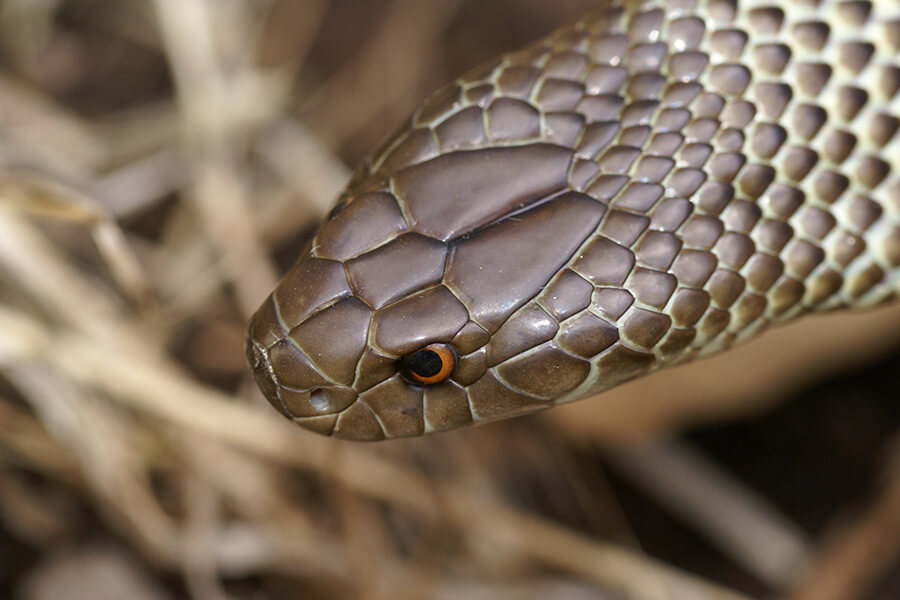Introduction
When it pertains to the remarkable globe of snakes, couple of species capture the creativity fairly like the child tiger snake. Understood for their unique coloration and powerful poison, these serpents are an integral component of Australia's distinct ecological community. In this comprehensive article, we will look into various elements of child tiger serpents, including their actions, environment, and exactly how to securely interact with them. Whether you're a wild animals fanatic or merely curious concerning these animals, comprehending baby tiger serpents can help cultivate a much deeper recognition for nature.


Baby Tiger Snakes: What You Required to Know About Their Actions and Habitat
What Are Baby Tiger Snakes?
Baby tiger serpents are adolescent kinds of the highly venomous species known clinically as Notechis scutatus These serpents are largely discovered in seaside areas of Australia, particularly in Tasmania and southerly Victoria. As they grow, their coloration modifications from a much more soft palette to the particular yellow and black bands that give them their name.
One remarkable aspect of child tiger serpents is their size; hatchlings commonly gauge around 25-30 centimeters in length. Despite their tiny stature, they have a surprising quantity of poison that can be detrimental to humans if bitten.
Physical Characteristics
Tiger serpents possess numerous essential physical traits:
- Coloration: The unique banding pattern commonly comes to be more obvious as they mature. Size: Adults can reach lengths of approximately 2 meters. Body Shape: They have a durable body that aids in swimming and earthbound movement.
Where Do Baby Tiger Snakes Live? Comprehending Their Habitat
Understanding the habitat preferences of baby tiger snakes is essential for both preservation efforts and public security. These snakes grow in various settings:
- Wetlands: Marshes and swamps supply ample searching grounds. Coastal Regions: Typically located near coastlines where they can quest for prey. Woodlands: Dense vegetation uses cover from predators.
Geographical Distribution
Tiger serpents are predominantly located along Australia's southern coast, including:
- Tasmania: Home to one of one of the most notorious populations. Victoria: Particularly in locations near water bodies.
Are Tiger Snakes Venomous? A Deep Study Their Venom
One typical concern arises when reviewing infant tiger serpents: "Are tiger serpents poisonous?" The solution is a definite yes!
Venom Composition
The poison of tiger snakes includes neurotoxins that can trigger paralysis, coagulopathy (blood clot concerns), and possibly death if neglected. Here's what you require to understand:
- Effects on Humans: An attack from a tiger snake can lead to signs and symptoms like swelling, pain at the bite site, nausea, and even respiratory system failure.
Comparison with Other Venomous Snakes
In comparison to other Australian snakes such as the eastern brown serpent or king brownish snake, tiger snake poison Check over here is taken into consideration among the most potent. However, deaths are rare because of better medical treatments and access to antivenom.
Behavioral Patterns of Baby Tiger Snakes
Understanding just how child tiger snakes act is vital for those that reside in or see locations where these reptiles are prevalent.
Nocturnal Habits
Most infant tiger snakes exhibit nocturnal behavior. They tend to forage for food during cooler evening temperature levels. This adaptability helps them prevent predators while boosting their searching efficiency.
Hunting Techniques
Their searching techniques consist of:

- Ambush Predation: Waiting stationary until victim comes close. Active Foraging: Proactively relocating through greenery or along rivers searching for food.
First Help for Serpent Bites: What You Must Know
Despite being fascinating animals, experiences with infant tiger serpents can result in dangerous situations if bites happen. Knowing emergency treatment procedures can conserve lives.
Immediate Tips After a Bite
Remain calmness; panic increases heart rate. Immobilize the influenced arm or leg using a splint or bandage. Seek immediate medical focus-- antivenom might be necessary.Creating a Serpent Bite First Aid Kit
A well-prepared emergency treatment kit should include:
|Item|Objective|| You can find out more ------------------------------|--------------------------------------|| Compression bandage|To immobilize the arm or leg|| Splint|Maintains damaged bones or joints|| Antihistamines|Reduces allergies|| Emergency situation contact numbers|Quick access throughout emergency situations|
Common Myths Regarding Tiger Snakes Debunked
Many misconceptions surround these fascinating reptiles; let's make clear some false impressions frequently held by people.
Myth # 1: All Tiger Snakes Are Aggressive
While some individuals may exhibit protective behaviors when endangered, not all tiger snakes display screen aggression in the direction of people unless provoked.
Myth # 2: Infant Tiger Snakes Are Less Harmful Than Adults
This myth https://rentry.co/xvnyibex might not be better from the reality! Baby tiger snakes include nearly as much venom as grownups about their size; hence they position significant dangers if bitten.
FAQs Regarding Baby Tiger Snakes
What do baby tiger snakes eat?- They mainly consume little creatures, birds, frogs, and fish.
- Look for slim bodies with faint banding patterns that end up being extra obvious as they mature.
- Yes! Birds of prey and bigger reptiles might target them.
- Typically every few weeks as they proliferate throughout their very early life stages.
- While some individuals do keep them illegally without permits as a result of their hazardous nature; it's usually not recommended provided their poisonous status.
- With prompt medical treatment-- including antivenom-- the survival price is high!
Conclusion
In summary, recognizing baby tiger snakes-- what they consume, where they live, exactly how they behave-- can outfit us with useful knowledge concerning these remarkable yet dangerous creatures. The significance of education and learning bordering first aid procedures can not be overemphasized; recognizing exactly how to react successfully after a bite can conserve lives while promoting respect for our slinking next-door neighbors within Australia's abundant biodiversity range.
By appreciating these serpents' duties within ecosystems-- and identifying prospective dangers-- we advertise conjunction rather than fear-based responses towards each other's presence in nature's grand tapestry! Whether you're a devoted hiker considering your following adventure or simply curious regarding local wildlife experiences near home-- this overview works as your relied on referral factor on the enigmatic world lived in by our close friends-- the magnificent baby tiger snake!